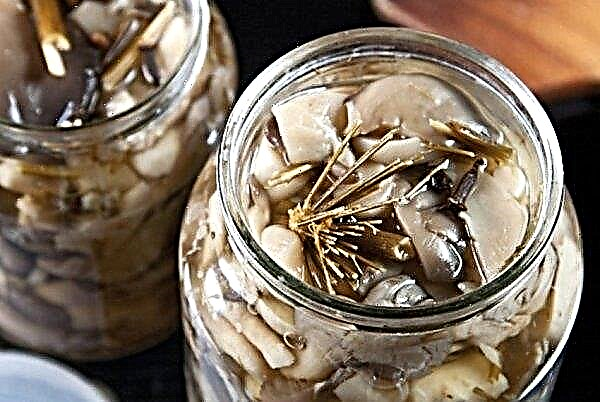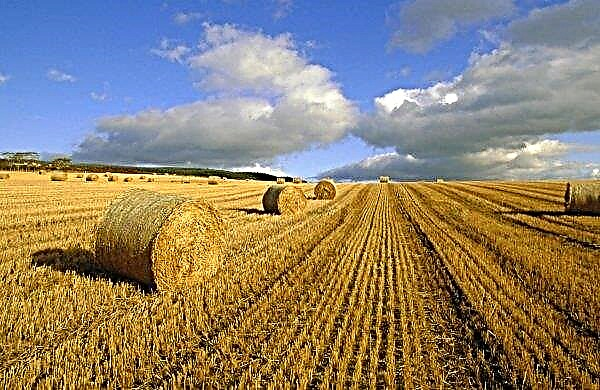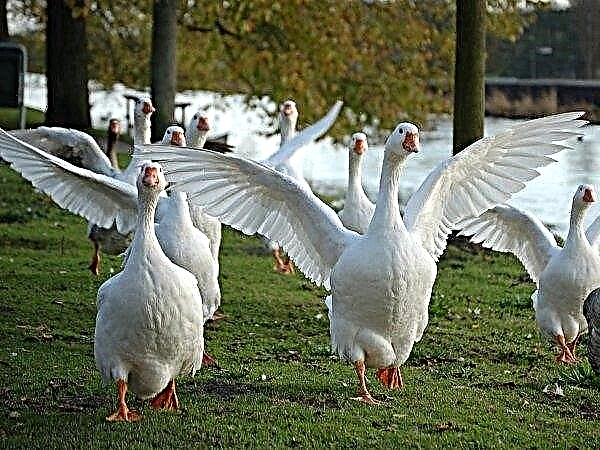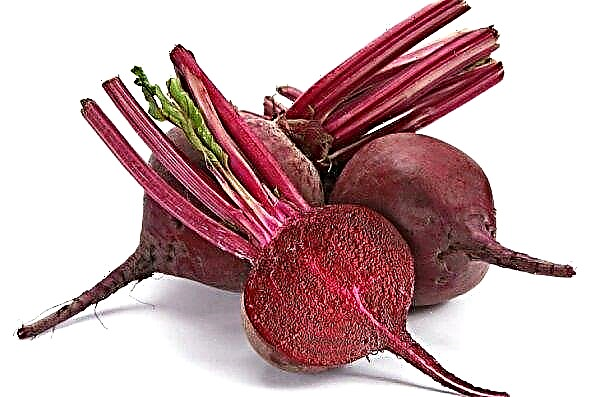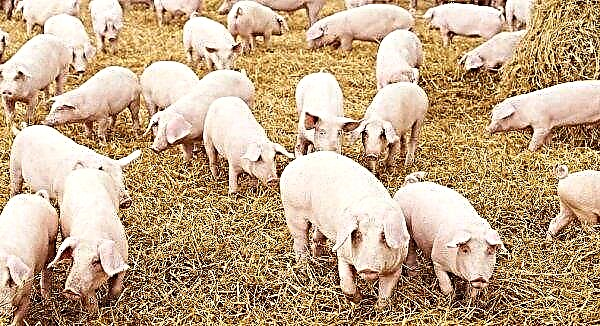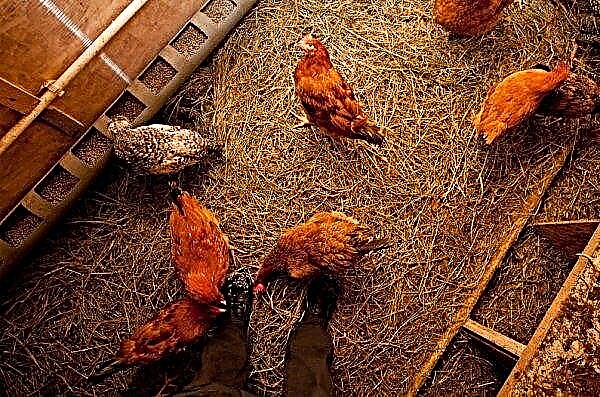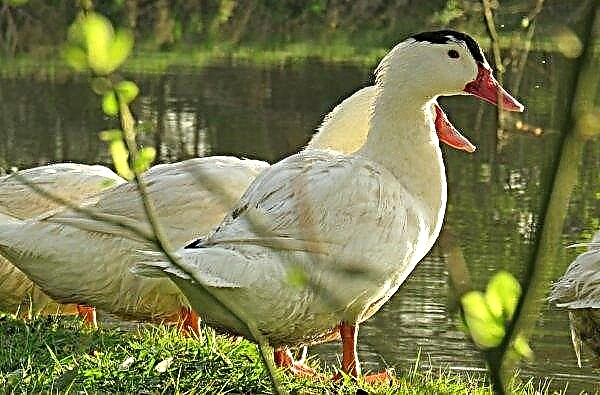One of the most popular types of garden flowers, having a bright color, is crocus, which is also called saffron. It decorates the site, starting to bloom in early spring and early autumn, unpretentious to growing conditions and has many color options. The botanical description, characteristics of the best plant varieties, especially its propagation, as well as the rules for the fight against diseases and pests of the crocus flower are described further in the article.
Botanical Description
Crocus belongs to the Iris family and is a perennial herb of the tuberous type. In the natural environment, it grows in the forests and meadows of Europe and Asia, as well as in the Middle East and the Mediterranean.
Did you know? The name "saffron" is of Arab origin and translates as "yellow", symbolizing the yellow stigmas of a flower.
The botanical description of crocus is presented below:
- The plant is stunted - its maximum height is about 10 cm.
- The root system has the appearance of a bulb of rounded or slightly flattened shape. On its surface there are small scales, and a bunch of thin fibrous roots is located below.
- Instead of shoots, the plant has basal leaves of an elongated shape. They are narrow and straight, collected in a bundle covered in scales.
- The flowers are located alone, have an elongated goblet shape. Their diameter is 2–5 cm.
- Buds are formed on a short peduncle without leaves. Blooming flowers are covered on all sides by membranous scales.
- The color of the crocus petals depends on the plant variety and can be either monophonic, or two-tone or spotty.
- The duration of the flowering period of the plant is 2-3 weeks. Depending on the variety, saffron forms buds in spring or early fall.
- After flowering is completed, an oblong capsule forms on the plant. It contains small oval seeds of a dark pink or brownish tint.

Most common species
There are many varieties of crocus, differing from each other in color and size of flowers, as well as flowering time. Conventionally, they can be divided into two large groups - autumn-flowering and spring-flowering varieties. As a result of many years of selection, we obtained special varieties of saffron - hybrids, most of which were bred in Holland. A description of the most beautiful and popular crocus varieties is presented later in the article.
Spring flowering species
Spring-flowering crocus varieties begin to produce the first leaves in March, and bloom in April. After flowering, the plant begins a dormant period, which lasts from mid-June to the end of August. With the onset of autumn, the flower actively grows the root system and accumulates nutrients.
Important! For lush and long flowering, it is recommended to grow saffron in well-lit areas with loose and fertile soil.
The most common types of this group:
- Spring crocus. He became famous since 1561, and his petals are purple or white. Each bulb can form 1-2 peduncles, on which flowers in the shape of a bell bloom. On the surface of each sheet is a narrow silver strip.

- Two-flowered crocus. The inner surface of the petals of this flower may have a bluish, lilac or white color, and on the outside you can notice small brown spots or longitudinal brown-purple stripes. The throat of this variety of saffron is colored white or yellow.

- Golden crocus. It has very narrow leaves and has been grown since 1841. In April, a goblet flower with golden petals forms on the plant, the outer surface of which is sometimes covered with small brown-purple stripes or spots. In the natural environment, this species grows in the Balkans and Asia Minor.

- Crocus Tomasini. The plant is characterized by large stellate flowers, almost flat in shape with narrow petals painted in lilac or purple. The leaves are narrow, have a rich green color. This species can be found in the wild on the hills and in deciduous forests in Europe.
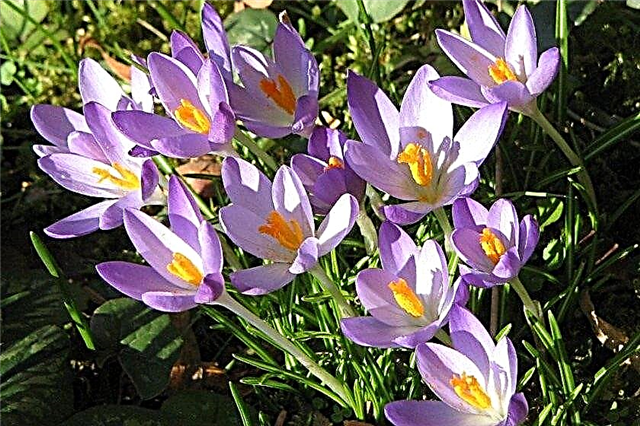
Crocuses blooming in the autumn
Autumn-flowering saffron varieties produce a flower stalk in September, and then grow leaves. From early June to mid-August, the plant is at rest.
Did you know? To make 30 g of saffron spice, about 80,000 crocuses need to be processed.
The most popular types of saffron blooming in autumn are:
- Beautiful crocus. The height of the plant is about 30 cm, and large flowers have a diameter of about 7 cm. The color of saffron petals varies from white-blue to dark blue or purple. Purple veins running along the entire length of the petal are clearly visible on the surface of the flower.
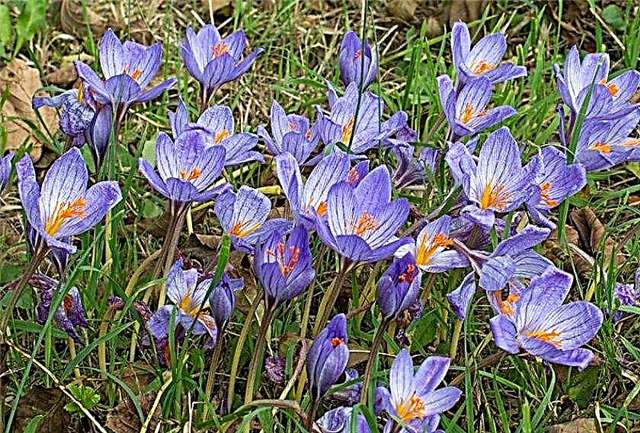
- Pretty crocus. Its large flowers are painted in pale purple, and contrasting dark stripes are located along the entire length of the petals. Up to 5–8 buds 7–10 cm long can form on one onion plant. The opened flowers are cup-shaped and 6–8 cm in diameter.

- Crocus banat. This species is characterized by gray-silver elongated leaves. The flowers consist of elongated petals of a light lilac color, and inside them you can see bright yellow anthers. This variety of saffron has been grown since 1629.
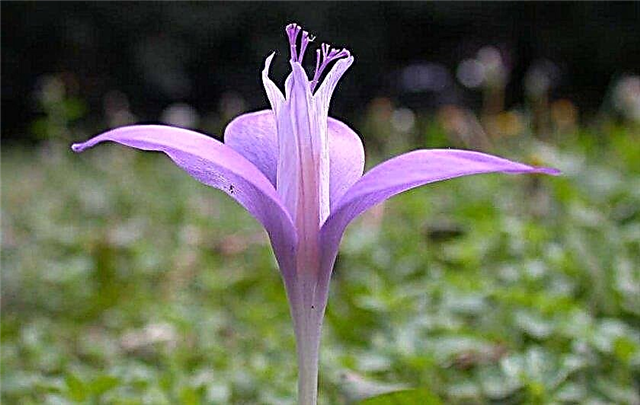
Large flowered
In 1897, Dutch breeders bred the first hybrid varieties of spring-blooming crocuses. The resulting varieties quickly gained popularity among flower growers, as they were distinguished by larger buds and unpretentiousness to growing conditions.
Important! Saffron paint was used by people to create cave paintings over 50,000 years ago.
The best varieties of large-flowered crocuses:
- Albion. The flowers of the plant have the shape of an elongated glass, their diameter is 4 cm. The rounded saffron petals are painted white, and rare and short purple touches are clearly visible on their surface.
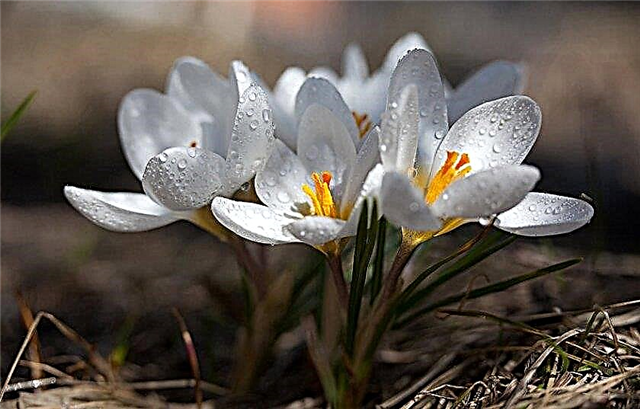
- Vanguard. A blossoming flower resembles a small bowl about 4 cm in diameter. It is formed by elongated oval petals painted in lilac-blue. At the base of each petal, you can notice small dark lilac spots.
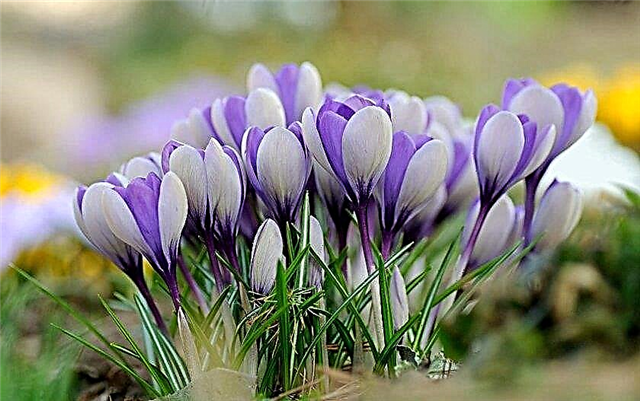
- Jubilee. Flowers of this variety have a goblet shape, and at their base there is a light purple spot. Crocus petals are painted in blue, their surface is slightly cast in purple, and at the edges you can notice a thin light border.
- Sniper banner. The diameter of a large flower can reach 4 cm, and in shape it resembles an elongated bowl. On the surface of the oval petals, a lilac mesh is noticeable - on the outside of the flower it is darker than inside. At the base of the flower there is a small dark lilac spot.
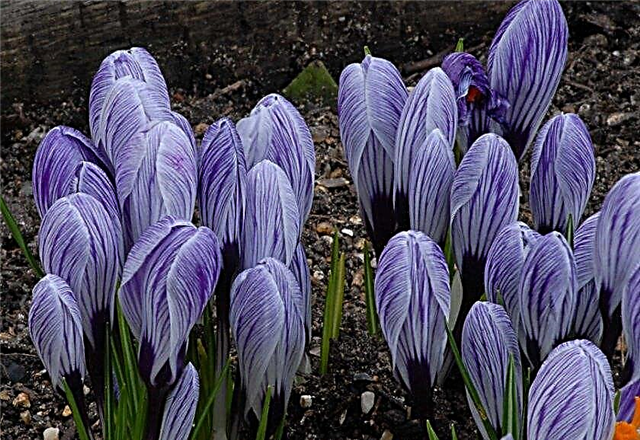
- Kathleen Parlow. This species is characterized by bright white flowers, whose diameter is about 4 cm. Saffron petals form a bowl, and on their inner surface near the base, small strokes of lilac color are noticeable.

Chrysanthus
The second variety of spring-blooming crocuses are hybrids obtained by crossing golden saffron with Dutch and two-color plant varieties. The resulting specimens form a separate group of crocuses - Chrysanthus.
The most common varieties:
- Jeepsey Girl. The flower has the shape of a wide bowl with a diameter of about 3.5 cm. It consists of bright yellow petals, the outer surface of which is darker, and the inside is light yellow with small brown spots. Outside, the flower is covered with bright purple strokes running along some of the petals.

- Marietta. This type of plant is characterized by large, flat flowers with a diameter of about 3.5 cm. They are formed by long oval petals, painted in a rich cream color with dark purple stripes. On the outer surface of the petals near the base there is a brown-green spot.
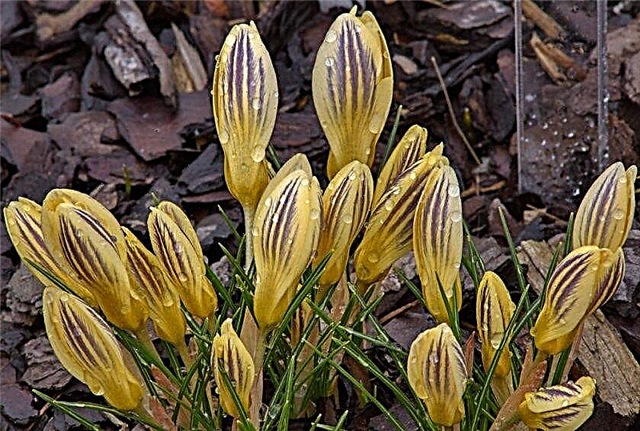
- Lady killer. Crocuses of this variety give flat cup-shaped flowers with two-color petals. Their inner part is white, and the outer surface of the petals is painted in a rich purple color. There is a white edge along the edge of the flower, and at the base of the bud there is a small bluish spot.
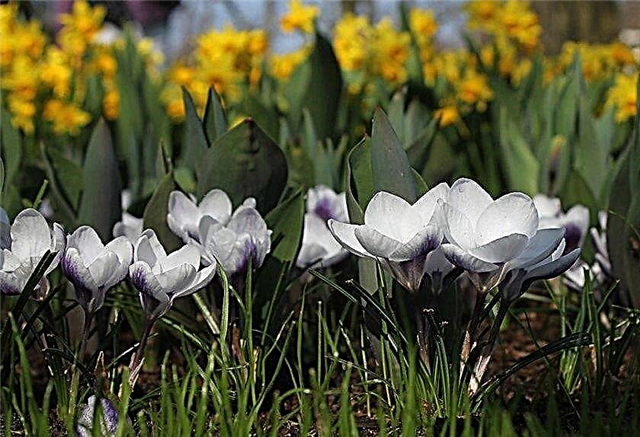
- Saturnus. Flat flowers of the plant consist of elongated oval cream-yellow petals, their diameter can reach 3.5 cm. Numerous lilac strokes are visible on the outer surface of the flower, and a small brownish-green spot can be seen at the base of the petals. The inside of the saffron of this variety is bright yellow.

Crocus propagation
At home, crocuses can be propagated by daughter bulbs or seeds. The first of these methods is simpler, since annually around the mother tuber a large number of children are formed, suitable for a separate planting.
Important! When used for planting seeds collected on their own, grown crocus may lose varietal characteristics.
The saffron propagation algorithm by daughter bulbs is as follows:
- Dig the mother plant out of the ground after the flowering period has ended.
- Carefully separate the daughter bulbs from the mother tuber. Clean and dry them. Store in a dark and cool place until autumn.
- Dig the land in the area intended for planting flowers. Deepen each bulb into the soil by 2-3 cm, placing them at a distance of 6-10 cm from each other.
- Sprinkle the tuber with loose earth. Water the flower a little.

The process of propagating crocus seeds consists of the following actions:
- Collect boxes on saffron stalks after flowering. Extract seeds from them.
- Spread the collected seed in a warm room in a thin layer. Dry it for 20 days.
- Loosen the surface of the soil. Prepare a small groove about 1 cm deep.
- Put the seeds in the recess, placing them at a distance of 4-5 cm from each other.
- Sprinkle a groove with planting material in loose soil. Pour with warm water.
Video: how to propagate crocuses with seeds
The use of crocus for domestic purposes
Gardeners grow saffron mainly for decorative gardening of their plot, as a flower bed with these flowers serves as a real decoration of any locality.
Important! Crocuses grown from seeds bloom only in the third year after planting.
But thanks to the many useful properties, crocus can also be used for various household purposes:
- to create medicines according to the recipes of traditional and traditional medicine - saffron improves the functioning of the digestive system, eliminates skin problems and relieves pain cramps;
- for use as an expensive food spice, giving the finished dish an attractive orange color and a piquant taste;
- in the chemical and textile industry - the product is used as a natural dye for fabrics;
- for the manufacture of perfume compositions.

Crocuses after flowering
After flowering, only green leaves and peduncle remain on the crocus. The latter does not look very beautiful, so it can be carefully cut. They leave the green part of the plant - it retains an attractive appearance for a long time after flowering and acts as a decoration of the garden.
Gradually, the saffron leaf plates turn yellow and fade. After that, you can either dig out the crocus bulb (if the plant was planted more than 3 years ago), or leave it to winter in the soil, covering the surface of the soil with a layer of mulch from peat and dry foliage.
Video: what to do with crocuses after flowering
When to dig bulbs
The time of digging saffron bulbs from the ground depends on the variety and flowering period of the plant. This procedure is recommended to be carried out during the dormant period of the flower in order to less injure it.
Did you know? In ancient Egypt, saffron was widely used as a natural aphrodisiac, and the legendary Queen Cleopatra used it for cosmetic procedures.
Digging of crocus tubers is carried out:
- from mid-July to early September - for spring-flowering plant varieties;
- from early June to mid-August - for saffron varieties forming flowers in the fall.

How to store dug bulbs
The dug bulbs of crocus are later used as planting material, so you need to treat them correctly.
To do this, after removing the tubers from the soil, perform the following actions:
- the onions are laid out in a warm room and slightly dried for several days;
- remove dead roots and scales, as well as specimens damaged by diseases and pests;
- sprinkle all places with mechanical damage with wood ash powder - this will prevent damage to the entire bulb;
- selected and processed tubers are laid out in a dry box in one layer;
- until planting in the ground, the bulbs are kept in a dry and dark place at a temperature of about + 22 ° C.
Diseases and Pests
Sometimes crocus planting suffers from diseases or pests that can completely destroy the flowers. To quickly fix the problem, the gardener needs to know the signs of damage and possible treatment methods.
The main diseases and pests of saffron:
- Mice. Damage the flower bulb, causing its decay, and are also carriers of various diseases. As a result, the plant begins to wilt and dies. Damaged tubers are dug out of the ground and sprinkled with wood ash.

- Wireworm. The pest feeds on the pulp of tubers, and the main sign of its appearance on the site are round through holes in the bulb. You can get rid of larvae by creating baits - recesses with a mixture of wet hay and grass. When a lot of wireworms gather in the trap, the grass is taken out of the site and burned.
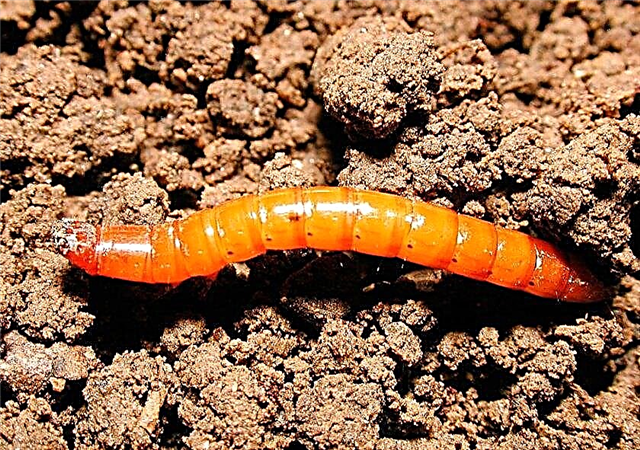
- Slug. They leave sticky secretions on the surface of plants, damage stems, bulbs and leaves. Pests must be collected manually, and with a significant defeat, chemical pesticides are used.

- Viral diseases. Various insects and field mice act as their carriers. The main signs of infection include deformation of flowers, the appearance of gray spots on leaves and petals. It is impossible to cure a diseased flower, so it is dug up and burned to avoid the further spread of infection.
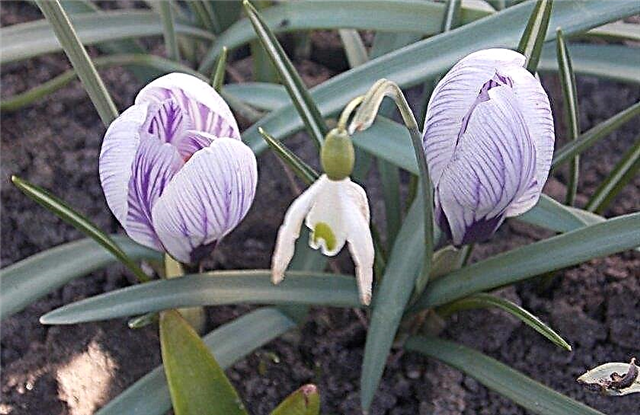
- Fungal diseases (various types of rot). They develop with waterlogging of the soil or excessive thickening of the plantings. A sign of a fungal infection is a soft and wrinkled bulb covered with white-pink spots. With a slight lesion, it is enough to dig the diseased tuber from the ground, sprinkle it with wood ash and dry at room temperature for a couple of days. If the plant is badly damaged by rot, it is removed from the site and burned.

To prevent the occurrence of the above problems, perform the following actions to care for plants in the open ground:
- set traps for mice near a flower bed;
- for the winter, plants are carefully covered with branches;
- use only healthy bulbs for planting;
- comply with the recommended plant layout;
- treat the bulbs with a fungicide solution before planting;
- sprinkled aisles in the flowerbed with coarse sand;
- remove densely growing weed grass on the flower bed;
- Avoid planting saffron on heavy clay soils, as well as in the shade.
Crocuses are primroses and can be used as a bright element of any landscape design.Due to the variety of species of this flower, each gardener can independently choose a suitable variety for himself.
Important! To reduce the risk of diseases and pests, crocuses are recommended to be transplanted to a new place every 5 years.
Using the information presented in the article, you can learn to propagate plants yourself, as well as timely notice and eliminate possible pests and diseases.





















